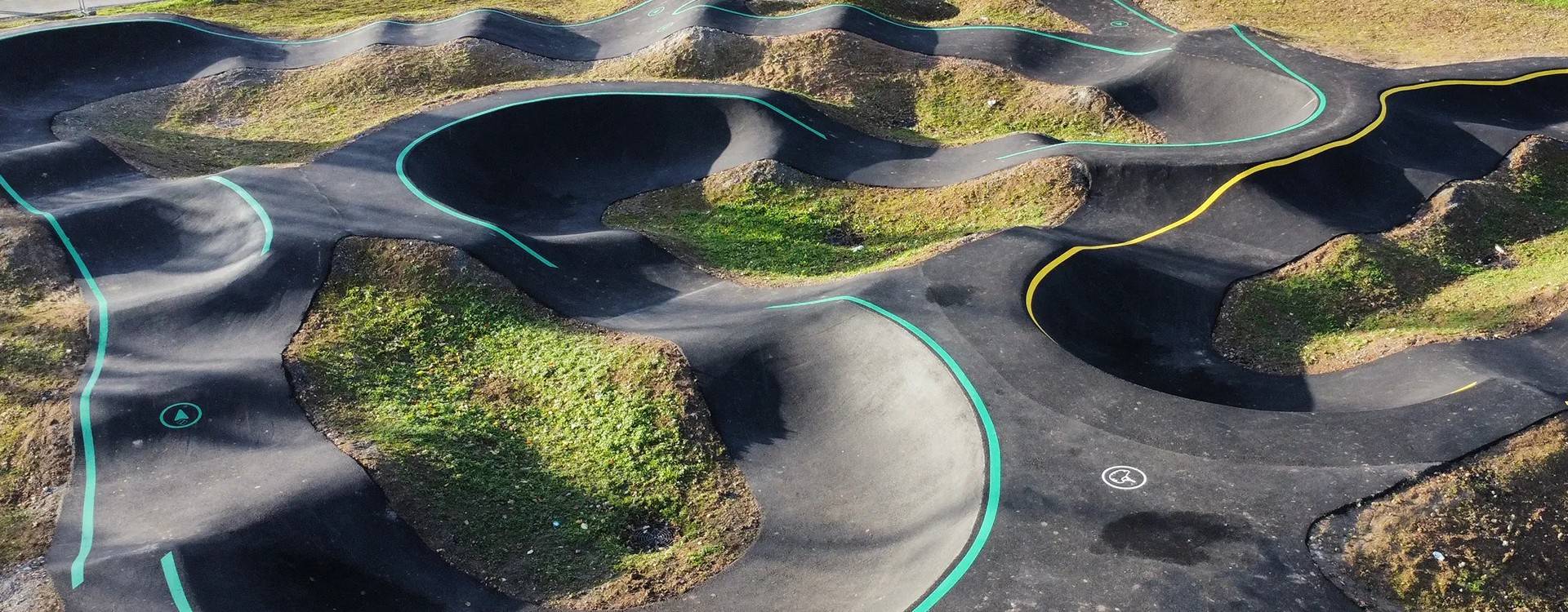Enthusiasts of extreme sports and adrenaline addicts have a new reason to celebrate: the pumptrack.
If you've never heard of this term before, don't worry, as we're here to tell you all about this exciting new trend gaining popularity among cycling and skateboarding enthusiasts.
What is a Pumptrack?
A pumptrack is a circular track comprised of bumps, turns, and dips designed to allow cyclists and skateboarders to navigate the course without constantly pedaling or pushing. Instead, participants use their bodies to "pump" through the track, utilizing the momentum generated by the back-and-forth movements to maintain their speed.
The Origin of Pumptrack:
While the concept of pumptrack has been around for some time, it has gained popularity in recent years thanks to competition events such as the Red Bull Pumptrack World Championships. These competitions have garnered media attention and inspired many enthusiasts to build their own pumptracks in their communities.
Vocabulary Related to Pumptrack:
Before diving into the pumptrack scene, it's essential to understand a few specific terms integral to this discipline.
1. Linear Meter
The linear meter is a unit of measurement used to assess the total length of the track. Pumptracks vary in size, ranging from a few linear meters to longer circuits designed for professional competitions.
2. Pump
"Pumping" is the key action on a pumptrack. It involves using compression and extension movements of the body to generate speed without pedaling. Experienced riders master the art of "pump," enabling smooth and swift movement on the track.
3. Flow
"Flow" refers to the fluidity and continuity of movement on the track. Well-designed pumptracks encourage optimal "flow," allowing participants to navigate the track naturally and seamlessly.
Why is Pumptrack so Popular?
**1. Universal Accessibility
One of the major attractions of the pumptrack is its universal accessibility. Whether you're a seasoned cyclist or an enthusiastic beginner, the pumptrack offers an exciting experience for all skill levels. Children, teenagers, and adults alike can enjoy this activity, making it an excellent option for families.
2. Skill Enhancement
The pumptrack is not only fun but also contributes to improving riding skills. Navigating through bumps and turns without pedaling helps participants develop balance, coordination, and riding technique. It's an excellent way to hone biking or skateboarding skills in a playful manner.
3. Socialization and Community
Pumptracks are often located in public spaces, making them an ideal meeting place for extreme sports enthusiasts. Participants can share tips, challenge each other, and create a genuine community around this activity.
4. Building Your Own Pumptrack
If the idea of joining the pumptrack excitement appeals to you, you might even consider building your own track. Numerous online resources and dedicated communities can help you design and construct your pumptrack, whether in your backyard or a community space.
Conclusion:
The pumptrack offers a unique experience that combines the thrill of biking and skateboarding with the camaraderie of a passionate community.
Whether you're a fan of extreme sport or a curious beginner, the pumptrack is an adventure you'll undoubtedly want to try.
So, get ready to pump and feel the excitement of this thrilling new trend!
MyVipFans
The marketplace of social shopping for professionals and their fans
I sign up




Leave a comment
Login to post comments
Comments
You can ride a Pump Track on Roller Skates, Inline Skates or Push-Scooter
By: Mvf100000000059 On 14/11/2023This article is well-written, informative, and reflects reality !
I'd like to emphasize that pump tracks aren't exclusively for bike and skateboard enthusiasts. Inline skaters, roller skaters and push-scooter users can use the pumtrack.
By the way, there are usually several tracks at a pumptrack
Each track has a color code that indicates its level of difficulty (blue for beginners, red for confirmed) and directional arrows are used to show the direction of movement.